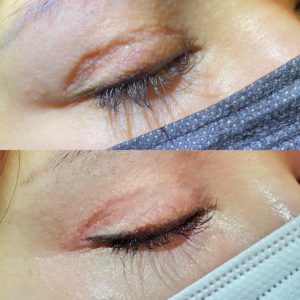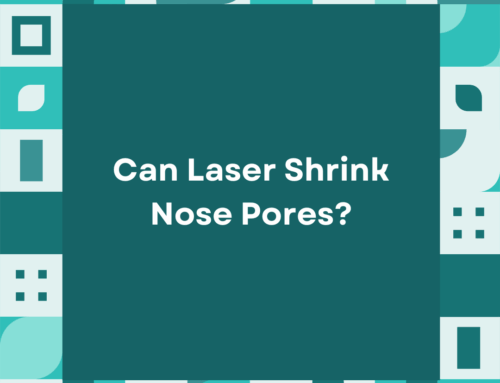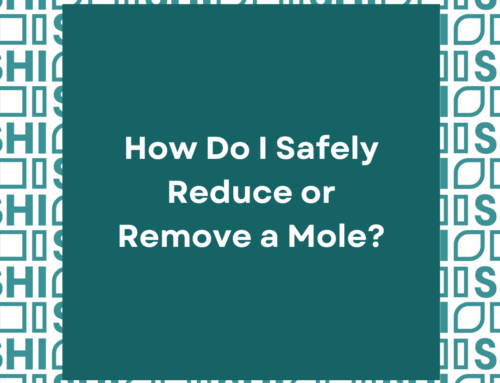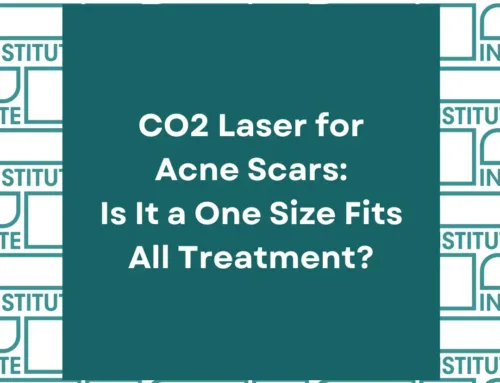What is a Keloid Scar?
Keloid scars are a type of scar that continues to grow uncontrollably after the initial injury. Technically, it is considered a subtype of hypertrophic scarring (a scar that is elevated above the skin surface). The difference is that normal hypertrophic scars are raised but stabilize at a certain point, whereas keloid scars continue to grow beyond the borders of the original wound.
Many people are very insecure about their keloid scars. When left untreated, keloid scars can take on numerous unsightly shapes and sizes that draw a lot of attention from people. Common areas where keloid scars occur include the chest, shoulders, jaw, and ears. What many of these areas have in common is that they have high skin tension, which is a known exacerbating factor for keloid scar formation.

Keloid scars have distinct visual and textural features:
- Elevated bump on the skin
- Itchy, red, and/or irritated
- Fibrous/rubbery feel
Tight clothing or other forms of friction are usually one reason why patients may face continual irritation to their scars. This may cause patients to scratch at their scars, which may cause the keloids to grow even more.
Keloid scars also have different morphological features. Keloid scars can be sessile or pedunculated. Sessile keloids are keloids whose entire base lays on top of the skin, like a name plaque on a door. A pedunculated keloid scar has a stock that attaches the scar mass to the skin, almost like a ball hanging from the ceiling. The morphology is an important factor when considering what treatment approaches to take.
How can I treat my keloid scar?
Most keloid scars do not require surgery to improve their appearance. Usually, the frontline treatment for keloid scars include anti-inflammatory injections. Depending on how mature your keloid scar is, there are a variety of different injectables that you may discuss with your physician to achieve optimal results:
- Early stage, inflamed wound/scar – steroid shots
- Mid-stage, slow-growing keloid scar – high-dose steroid shots
- Late-stage, mature keloid scar with continual growth – high-dose steroid shots with chemotherapeutic agents
Calibrating the right dose for the injectable requires a lot of skill and experience. Using too strong of an agent, for instance, may cause your skin to dip below the surface of the healthy skin but is usually reversible over time. It is important to have a certified dermatologist assess the current status of your keloid scar before deciding on an injectable therapy.
What if injections do not work?
Injections are the most minimally invasive technique for treating keloid scars. If your scars are resistant to treatment, there are other treatments that may help with your condition. This includes radiation therapy and cryotherapy.
In radiation therapy, electrically charged particles or X-rays are delivered superficially to the keloid to induce controlled death of the scar tissue while sparing the surrounding healthy tissue. In cryotherapy, liquid nitrogen can be either applied directly to the keloid or injected directly into the scar itself. Many doctors use a combination of these therapies to achieve optimal results. The adverse effects are usually a bit nastier than conventional steroid or chemotherapeutic injections, but this does differ from patient to patient.
What if I just want to jump straight to surgery?
Surgery is usually the last resort for most keloid scar cases. This is because if a patient develops a keloid scar from an injury, performing surgery (another injury) often results in another keloid developing.
However, there are some exceptions. For instance, if your scar covers a large surface area or is pedunculated (has a stock), which is common on areas like the ear, excision may be a good option.
Following excision, these keloid scars need to undergo regular injections over a prolonged period to ensure that they do not come back.
How do I reduce the risk of the keloid scarring coming back?
Aside from getting regular steroid injections, patients may be instructed to apply a pressure pad or clamp to the treated area. Additionally, patients have to practice good wound care by applying antibiotic ointment and keeping the wound sterile overall.
This will help prevent infection and unwanted inflammation that may trigger the keloid formation process once again.
Other products, such as silicone gel sheeting can also help reduce the risk of keloid scar recurrence. This material promotes an optimal moist healing environment to ensure that the wound heals with minimal fibrous tissue formation.
What about hyperpigmentation?
Hyperpigmentation is a very common condition that arises with keloid scarring. It usually occurs in people with darker skin tones, whose skin are more prone to developing excess melanin in response to skin injuries.
Hyperpigmentation can be treated with a variety of topical agents, including hydroquinone and alpha-/beta-hydroxy acids (salicyclic acid, glycolic acid, Jessner’s peel, etc.)
Many patients ask if combining this with microneedling can help expedite the fading process. While microneedling may certainly help optimize delivery of the topical agents, any additional injury to the keloid scar has a risk of exacerbating the scar and causing more growth.
Laser therapies, such as Nd:YAG lasers, pulse-dye lasers, intense pulsed light, and KTP lasers, are also effective for expediting the healing process without causing significant injury to the skin.
Final words…
Keloid scars are among the hardest conditions to treat due to its dynamic nature. There are a variety of different treatment options available to treat both the raised appearance of the scar as well as the color. The goal is to deliver treatments that cause minimal irritation to the scar so as to not trigger additional growth.
Why should you choose the Scar Healing Institute?
The Scar Healing Institute team is highly trained and experienced with treating keloid scars, especially on patients of color. In fact, the director of Scar Healing Institute, Dr. Hazany, underwent intensive training at Morehouse School of Medicine, where the patient population was predominantly of African American descent. If you are looking for treatment customized for your skin type, please contact our team to set up a comprehensive initial consultation to start your scar healing journey.




